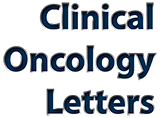Correlação entre perfil lipídico, estado menopausal e câncer de mama
Correlation between lipid profile, menopausal status and breast cancer
Altino J, Souza DR
Resumo
Introdução: O câncer de mama tem alta prevalência e mortalidade. A história familiar é um fator de risco em 20-25%. Existem outros fatores como a obesidade, a dislipidemia, a utilização de terapia hormonal (HT). No entanto não é claro a combinação destes fatores. Objetivo: Avaliar a relação entre os níveis hormonais, perfil lipídico, índice de massa corpórea (IMC) e sua influência na expressão imunohistoquímica de receptores em tumores de mama de em mulheres na pós-menopausa com ou sem HT. Casuística e Método: Foram avaliadas 50 mulheres na pós-menopausa portadoras de câncer de mama, divididos em dois grupos: G1 sem, e G2 com HT, pelo menos de uso 5 anos. Analisamos o perfil lipídico o colesterol total (CT) e frações (LDLc, HDLc, VLDLc) e triglicerídeos (TG), o perfil hormonal (estradiol, hormônio folículo estimulante (FSH) e hormônio luteinizante (LH). A análise da expressão imunohistoquímica receptores de estrogênio (ER), progesterona (PR) e humano fator epidérmico de tipo 2 (HER-2) e avaliamos o IMC. Resultados: Os valores médios aumentados para VLDLc 36 x 28 mg/dL e para TG 180 x 142 mg/dL para G1 versus G2 respectivamente com p 0,048 para ambos. Na análise dos valores de LH 28% das mulheres com TH apresentavam correspondente a pré-menopausa (p 0,010). Em relação ao perfil imunohistoquimico e valores de IMC foram semelhantes em ambos os grupos, e não foi evidenciado diferença na sobrevivência livre de doença e global dos grupos. Conclusão: Alterações no perfil hormonal e lipídios não influenciaram a expressão imuno-histoquímica, o IMC, e não interferiam na sobrevida global e recorrência da doença.
Palavras-chave
Abstract
Introduction: Breast cancer has high prevalence and mortality. Family history is a risk factor in 20-25%. There are other factors such as obesity, dyslipidemia, use of hormone therapy (HT). However it is not clear the combination of these factors. Objective: To evaluate the relationship between hormone levels, lipid profile, body mass index (BMI) and their influence on the imunohistochemical expression of receptors in breast tumors in postmenopausal women with or without HT. Methods: We evaluated 50 women in postmenopausal women with breast cancer were divided into two groups: G1 without, and G2 with HT, use at least five years. We have analyzed the lipid profile the total cholesterol (TC) and fractions (LDLc, HDLc, VLDL-C) and triglycerides (TG), hormonal profile (estradiol, follicle stimulating hormone (FSH) and luteinizing hormone (LH). The analysis of imunohistochemical receptor expression estrogen (ER), progesterone (PR) and human type 2 epidermal factor (HER-2) and assessed BMI. Results: The median Values increased to VLDLc 36 x 28 mg/dL and TG 180 x 142 mg/dL in G1 G2 respectively and p 0,048 with both. The analysis of the LH levels 28% of women had TH corresponding to premenopausal (p = 0,010). With respect to imunohistochemical profile and BMI values were similar in both groups, and it was not observed difference in disease-free survival and overall group. Conclusion: Changes in hormonal profile and lipid did not influence the imunohistochemical expression, BMI, and did not interfere in overall survival and disease recurrence.
Keywords
Referências
1. Citado 2015 fev 16; disponível em: http://www2.inca.gov.br.
2. Pinotti JA, Barros ACSD. Ginecologia Moderna. Rio de Janeiro, Ed. Revinter; 2004.p 548-560.
3. Murano T, Izumi S, Kika G, et al. Impact of menopause on lipid and bone metabolism and effect of hormone replacement therapy. Tokai J Exp Clin Med. 2003; 28(3):109-19.
4. Cuzick J, Sestak I, Baum M, et al. Effect of anastrozole and tamoxifen as adjuvant treatment for early-stage breast cancer: 10-year analysis of the ATAC trial. Lancet Oncol. 2010; 11(12):1135-41.
5. Porter GA, Inglis KM, Wood LA, Veugelers PJ. Effect of Obesity on Presentation of Breast Cancer. Ann Surg Oncol. 2006; 13(3):327-32.
6. Rossouw JE, Anderson GL, Prentice RL, et al. Risks and benefits of estrogen plus progestin in healthy postmenopausal women: principal results From the Women’s Health Initiative randomized controlled trial. JAMA. 2002 ;288(3):321-33.
7. Leiter LA, Lundman P, Silva PM, et al. Persistent lipid abnormalities in statin-treated patients with diabetes mellitus in Europe and Canada: results of the Dyslipidaemia International Study. Diabet Med. 2011; 28(11):1343-51.
8. Girard-Mauduit S. The lipid triad, or how to reduce residual cardiovascular risk? Ann Endocrinol (Paris). 2010; 71(2): 89-94.
9. Nelson HD, Humphrey LL, Nygren P, Teutsch SM, Allan JD. Postmenopausal Hormone Replacement Therapy Scientific Review. JAMA. 2002 ;288(7):872-81.
10. McDonnell DP, Park S, Goulet NT, et al. Obesity, Cholesterol Metabolism and Breast Cancer Pathogenesis. Cancer Res. 2014 ;74(18):4976-82.
11. Kumar V, Singh A, Sidhu DS, Panag KMDS. A Comparative Study to Evaluate the Role of Serum Lipid Leves in Aetiology of Carcinoma de Mama. Journal of Clinical and Diagnostic Research. 2015 ;9(2):01-03.
12. Yasui T, Uemura H, Umino Y, et al. Serum Estrogen Level After Hormone Replacement Therapy And Body Mass Index in Postmenopausal and Bilaterally ovariectomized women. Maturitas 2005; 50: 19-29.
13. Nyante SJ, Dallal CM, Gierach GL, et al. Risk Factors for Specific Histopathological Types of Postmenopausal Breast Cancer in the NIH-AARP Diet na Health Study. Am Journal of Epidemiology. 2013; 178(3): 359-371.

